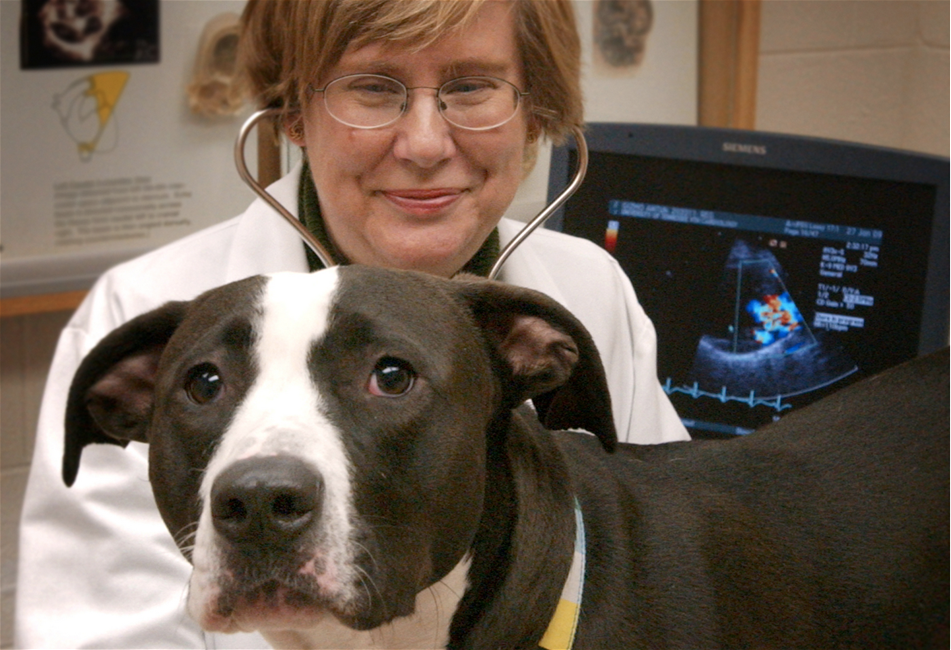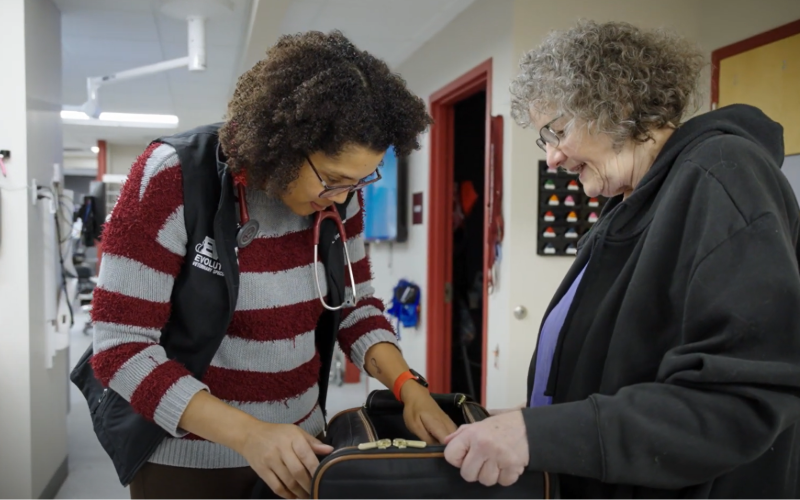What You Required to Understand About Vet Solutions: An Overview of Diagnostic Devices and Procedures
Veterinary solutions play a crucial role in keeping the health and wellness of pets. Routine check-ups can disclose covert wellness issues early on. Different analysis tools and treatments, such as blood tests and imaging methods, provide crucial insights right into a pet's wellness. Recognizing these methods is crucial for pet owners. What details diagnostic procedures are most generally made use of, and just how can they impact a family pet's therapy plan?
Value of Normal Vet Check-Ups
While lots of pet owners might underestimate the importance of routine vet exams, these appointments are vital for keeping a pet's overall health and wellness. Regular brows through to the veterinarian enable early detection of prospective wellness concerns prior to they rise right into significant problems. Regular check-ups frequently include vaccinations, which are very important for protecting against contagious diseases that can seriously impact an animal's wellness. Furthermore, these visits supply a chance for vets to examine the pet's weight, oral health, and general condition, ensuring that the family pet is prospering. During these sees, family pet proprietors can likewise receive useful suggestions on diet plan, workout, and precautionary care customized to their details family pet's needs.
Common Analysis Procedures in Veterinary Medication
In veterinary medication, precise diagnosis is important for reliable treatment. Common analysis procedures include blood screening methods, advanced imaging modern technologies, and urinalysis, each playing a substantial function in identifying wellness problems. Understanding these approaches improves the ability to give proper care for pet individuals.
Blood Testing Strategies
Blood testing strategies act as important analysis tools in vet medicine, making it possible for vets to assess the wellness of animals properly. These techniques include collecting blood examples to analyze different components, such as red and white blood cells, platelets, and biochemical pens. Usual tests consist of full blood counts (CBC), which review general wellness and discover infections, and biochemical panels, which assess organ feature and metabolic status. Furthermore, serological examinations can identify certain diseases with antibody discovery. Blood testing is minimally invasive and offers important details that aids in identifying problems, keeping track of health and wellness standing, and assessing actions to therapies. Overall, these techniques play a crucial role in making sure ideal look after family pets and animals alike.
Imaging Technologies Made Use Of
Diagnostic imaging technologies are vital devices in vet medication, enhancing blood screening strategies by providing visual insights into an animal's internal structures. Common imaging modalities include X-rays, which serve for assessing bone fractures and finding international things, and ultrasound, which permits real-time visualization of soft cells and organs. Magnetic resonance imaging (MRI) uses in-depth photos of complicated anatomical areas, especially in neurological evaluations. Computed tomography (CT) offers cross-sectional pictures, enhancing diagnostic precision for numerous problems. Each of these innovations aids vets in detecting ailments, preparing treatments, and keeping track of recovery. By including imaging modern technologies, vet experts can better analyze a pet's health and wellness and make informed choices concerning their care.
Urinalysis and Diagnostics
Urinalysis serves as a critical analysis tool in vet medication, offering valuable understandings into a pet's general health and assisting in the detection of various problems. This non-invasive procedure assesses urine samples to analyze kidney function, hydration standing, and metabolic conditions. Common parts analyzed consist of certain gravity, pH levels, sugar, proteins, and the visibility of blood or germs. Unusual searchings for can suggest issues such as urinary system system infections, diabetes mellitus, or kidney condition. To improve analysis accuracy, urinalysis is usually done together with various other examinations, such as blood work and imaging researches. Early detection via urinalysis can lead to prompt treatments, boosting the diagnosis for several veterinary individuals. Consequently, it is a crucial element of comprehensive vet care.
Understanding Blood Examinations and Research Laboratory Analysis
Recognizing blood examinations and laboratory analysis is crucial in vet medication as it aids in identifying numerous wellness conditions in animals. Different kinds of blood examinations give necessary details concerning an animal's internal state, while interpreting lab results needs cautious factor to consider of countless factors. This section will explore the types of blood tests offered and the relevance of their outcomes.
Kinds Of Blood Examinations
Blood examinations play a crucial duty in vet medication, supplying crucial understandings right into a pet's health and wellness standing. Different sorts of blood examinations are made use of, each offering various functions. Total blood counts (CBC) examine general health and wellness and find problems such as anemia or infection. Biochemical profiles assess organ feature by gauging enzymes and electrolytes, supplying insights right into metabolic wellness. Serological examinations determine particular antibodies or pathogens, aiding in the medical diagnosis of infections or autoimmune conditions. Blood inputting assurances safe transfusions, while coagulation examinations determine the blood's capability to clot, vital for procedures. These tests jointly boost diagnosis, treatment preparation, and tracking of an animal's wellness, showing the significance of comprehensive laboratory evaluation in veterinary care.

Translating Laboratory Outcomes
A comprehensive analysis of lab results is crucial for accurate diagnosis and treatment in veterinary medicine. Translating lab results requires an understanding of regular reference ranges and the value of deviations. Blood tests can expose numerous health signs, such as organ function, electrolyte balance, and the existence of infections. Vets must consider the entire scientific image, consisting of the animal's history, physical exam searchings for, and any signs and symptoms presented. Variants in outcomes might develop from elements such as age, breed, and underlying wellness problems. Subsequently, laboratory results ought to not be seen in isolation but instead as component of an all-inclusive diagnostic approach. Precise analysis enables tailored treatment strategies and far better end results for vet individuals.
Imaging Techniques: X-rays, Ultrasounds, and Beyond
Imaging methods are necessary devices in veterinary medicine, giving important insights right into the wellness and health of animals. Among one of the most frequently used approaches are Ultrasounds and x-rays. X-rays are indispensable for visualizing bone frameworks, helping vets determine fractures, tumors, or foreign objects. This method is fast and non-invasive, making it perfect for immediate situations.Ultrasounds, on the various other hand, use acoustic waves to produce pictures of soft tissues and body organs. This technique is specifically helpful for analyzing the heart, abdominal area, and reproductive organs, enabling vets to evaluate problems like fluid accumulation or body organ abnormalities.Beyond X-rays and ultrasounds, advanced imaging methods such as computed tomography (CT) and magnetic vibration imaging (MRI) are increasingly used in vet practice. These techniques supply comprehensive cross-sectional photos, boosting the accuracy of diagnoses and therapy strategies. Cancer Veterinary Near Me. Generally, imaging strategies play an important function in making sure effective veterinary treatment
The Function of Biopsies in Diagnosing Pet Dog Health Issues
Precision in identifying wellness concerns in pets commonly depends upon the use of biopsies, which offer conclusive details concerning cells abnormalities. A biopsy his explanation includes the removal of a little sample of cells for exam under a microscopic lense, allowing veterinarians to identify various problems, consisting of infections, lumps, and inflammatory conditions. This analysis tool is vital for comparing benign and malignant developments, directing treatment choices, and evaluating the seriousness of a condition.Biopsies can be carried out using different strategies, such as needle desire, incisional biopsies, or excisional biopsies, depending on the location and sort of cells entailed. The option of technique might affect healing time and the quantity of tissue gathered. Ultimately, the information amassed from a biopsy can bring about targeted treatments, enhancing outcomes for pets encountering significant health and wellness difficulties. Veterinarians emphasize the relevance of this treatment in accomplishing precise diagnoses and reliable therapy plans.
Advanced Diagnostic Devices: Endoscopy and CT Checks

Advanced diagnostic devices, such as endoscopy and CT scans, play a vital role in contemporary vet medicine, offering non-invasive techniques to picture inner structures and detect various conditions in pet dogs. Endoscopy involves using a flexible tube furnished with an electronic camera, allowing vets to examine the intestinal system and breathing system directly. This method can expose problems such as tumors, foreign bodies, or inflammation, making it possible for targeted therapy plans.CT scans, on the other hand, utilize sophisticated imaging modern technology to develop detailed cross-sectional pictures of the body (CT Scans For Dogs). This approach is specifically useful for assessing complicated frameworks like the mind, back, and joints. By supplying high-resolution pictures, CT scans aid veterinarians in identifying issues that may not appear with typical radiography. With each other, these advanced tools enhance diagnostic accuracy, improve treatment outcomes, and ultimately contribute to better overall pet health management

Translating Examination Results: What Pet Dog Owners Ought To Know
Understanding test outcomes can be a challenging job for animal proprietors, especially after advanced treatments like endoscopy and CT scans have been executed. Interpreting these outcomes requires a grasp of clinical terminology and a clear understanding of what the searchings for indicate regarding the pet dog's health and wellness. Vets usually supply descriptions, however the intricacy of the results can still lead to confusion.Pet owners need to actively participate in conversations with their veterinarians, asking concerns to clarify any kind of unpredictabilities. It is necessary to understand typical versus irregular results and the ramifications for the pet dog's treatment plan. Furthermore, acknowledging that some outcomes might call for further testing or monitoring can assist proprietors remain notified regarding their pet's wellness trip. Inevitably, a joint approach between family pet proprietors and veterinary professionals promotes much better health and wellness outcomes and boosts the total care experience for pets.
Often Asked Concerns
Exactly how Do I Select the Right Veterinary Facility for My Pet dog?
Choosing the best veterinary clinic includes looking into neighborhood options, examining qualifications, seeing centers, and assessing personnel interactions (Board Certified Veterinary Cardiologist). Focusing on referrals from relied on resources can aid assure the most effective care and setting for an animal's wellness needs
What Should I Do if My Pet Dog Refuses to visit the Veterinarian?
When a pet dog rejects to go to the veterinarian, it's advisable to continue to be calm, usage deals with or playthings to lure them, and take into consideration scheduling a home check out if anxiety browse this site continues. Perseverance and favorable support are essential.
Exist Telehealth Options for Veterinary Services?
Telehealth alternatives for veterinary services are progressively available, permitting pet proprietors to talk to vets from another location. These solutions enable conversations concerning health and wellness worries, advice on minor disorders, and follow-ups without requiring to check out a center.
Exactly how Frequently Should My Family Pet Have Oral Check-Ups?
The frequency of dental exams for family pets normally depends on their age and type. Normally, veterinarians advise yearly oral evaluations, although some pet dogs might need even more constant visits to keep ideal oral health and wellness.

What Are the Prices Connected With Vet Diagnostics?
The expenses related to vet diagnostics can differ commonly, generally varying from basic tests like blood work to innovative imaging techniques. Aspects influencing expenses include the clinic's area, equipment utilized, and details tests required for every pet. Vet services play a vital duty in maintaining the wellness of pet dogs. While several pet owners may take too lightly the value of normal vet exams, these visits are essential for keeping a pet's total wellness. In addition, these appointments supply a possibility for vets to assess the animal's weight, dental health, and helpful site overall problem, ensuring that the family pet is prospering. Accuracy in diagnosing health and wellness concerns in family pets commonly hinges on the use of biopsies, which provide clear-cut details regarding tissue problems. In addition, acknowledging that some results might need additional testing or surveillance can assist proprietors stay informed concerning their family pet's health and wellness trip.